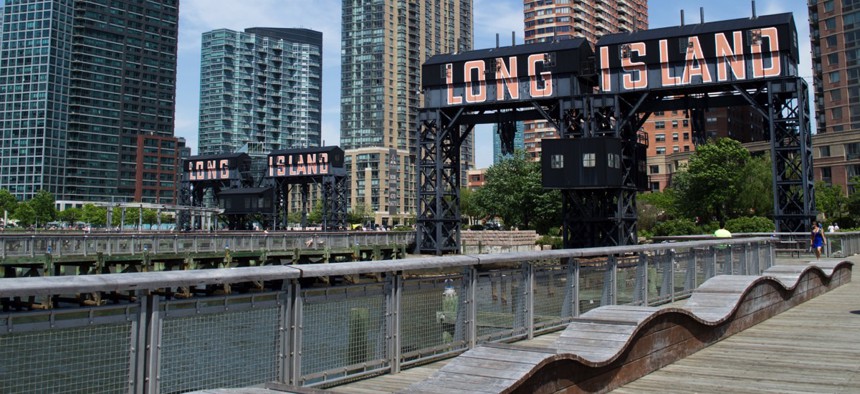How Some States and Localities Are Helping to Close Their Wireless Gaps

Fifteen wireless towers are slated to be built by next year along the Long Island Railroad. elissa1000 / Shutterstock.com
The way a Florida company is improving coverage along the Long Island Rail Road shows the power of collocation and revenue sharing.
Mobile users expect a readily available signal while on their myriad devices these days, and state and local governments are increasingly working with wireless and infrastructure carriers to deliver.
New York state’s Metropolitan Transportation Authority, for instance, entered a revenue-sharing agreement with Florida-based Parallel Infrastructure to have 15 wireless towers built along the route of the Long Island Railroad.
The MTA, which has jurisdiction over the New York City Subway and the Metro-North and Long Island Rail Road commuter networks, will initially pay to keep police communications relays on the towers. Those payments will stop once wireless carriers begin collocating on the towers and start paying rent.
“Wireless carriers must make sure their service is up to a certain standard,” said Ed Myers, Parallel Infrastructure vice president of strategic initiatives. “In order for people to stay happy with their service where they are living, cities and counties have got to assist wireless carriers in keeping that service standard."
Parallel Infrastructure prefers to build its 100-foot monopoles on publicly-controlled right-of-way—in this case, the MTA’s Long Island Rail Road.
While wireless carriers have already blanketed places like Long Island with their towers, there are still needs to be met or enhanced, like when a new business park opens and a coverage hole might develop.
So Parallel Infrastructure puts up its own capital to lease public land nearby and build a tower on the site. Typically the company makes a one-time completion payment of $25,000 to $50,000 to the government it’s working with when the tower is finished.
The state or locality starts making about $1,000 a month in ground rent on a multi-decade deal that escalates 3 percent annually on a fallow asset that previously generated zero revenue. Parallel Infrastructure turns around and begins leasing space on the tower to wireless carriers—having nationwide agreements with all major ones like Verizon and AT&T—while also charging them to operate the compound.
Carriers collocate on the tower to cut down on the number of monopoles in an area, and when they do, Parallel Infrastructure shares some of the rent with the state or locality from the new recurring revenue stream.
Wireless carriers pay anywhere from $1,500 to $5,000 a month, depending on tower location, to hang their equipment on the compound.
Generally, any emergency medical services equipment states and localities wish to hang on the tower is allowed for free. Sometimes Parallel Infrastructure will plant trees or provide other non-monetary services in exchange for variances on the project.
“If you play out the math for ground rent and revenue sharing over the 20-year lifespan of a tower, it might generate the city $900,000 in revenue on a piece of land they were doing nothing with previously,” Myers said.
Parallel Infrastructure, a subsidiary of Coral Gables-based Florida East Coast Industries, has around 1,200 towers across the country to date and is on track for 100 new ones in 2015, with 150 to 200 more in development. Typically it takes six to 18 months to get a tower zoned, permitted, built and approved.
Many states and localities are switching over to 700 MHz public safety spectrum systems because they’re highly interoperable between jurisdictions, which is why MTA needed towers in the first place. They cost $300,000 to build, and Parallel Infrastructure has about $7.5 million of its own capital in play to see to they’re up by year’s end.
Best of all, none of this will cost taxpayers a dime.
“Historically, a couple counties don’t have a whole lot of wireless coverage and capacity near their commuter train platforms. The new police radio system required the additional locations to get it needed coverage from a design standpoint,” Myers said. “Now there is sharable infrastructure for public safety and commercial wireless services.”
(Photo by elissa1000 / Shutterstock.com)
Dave Nyczepir is News Editor for Government Executive’s Route Fifty.
NEXT STORY: NGA posts geoint for Arctic






